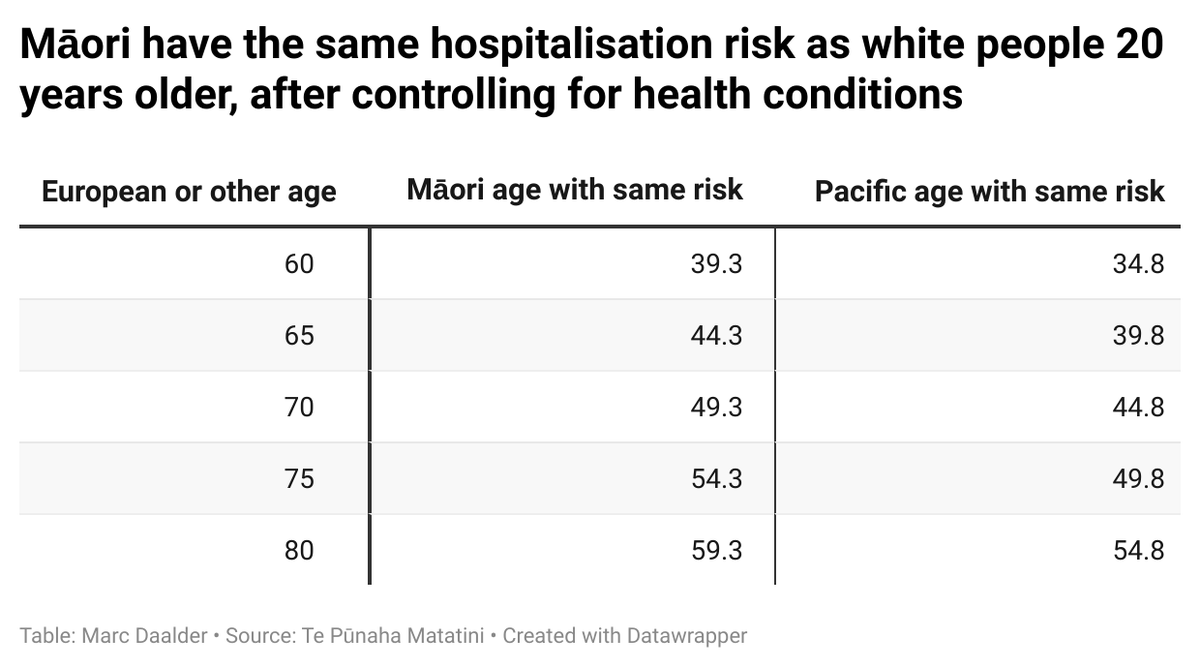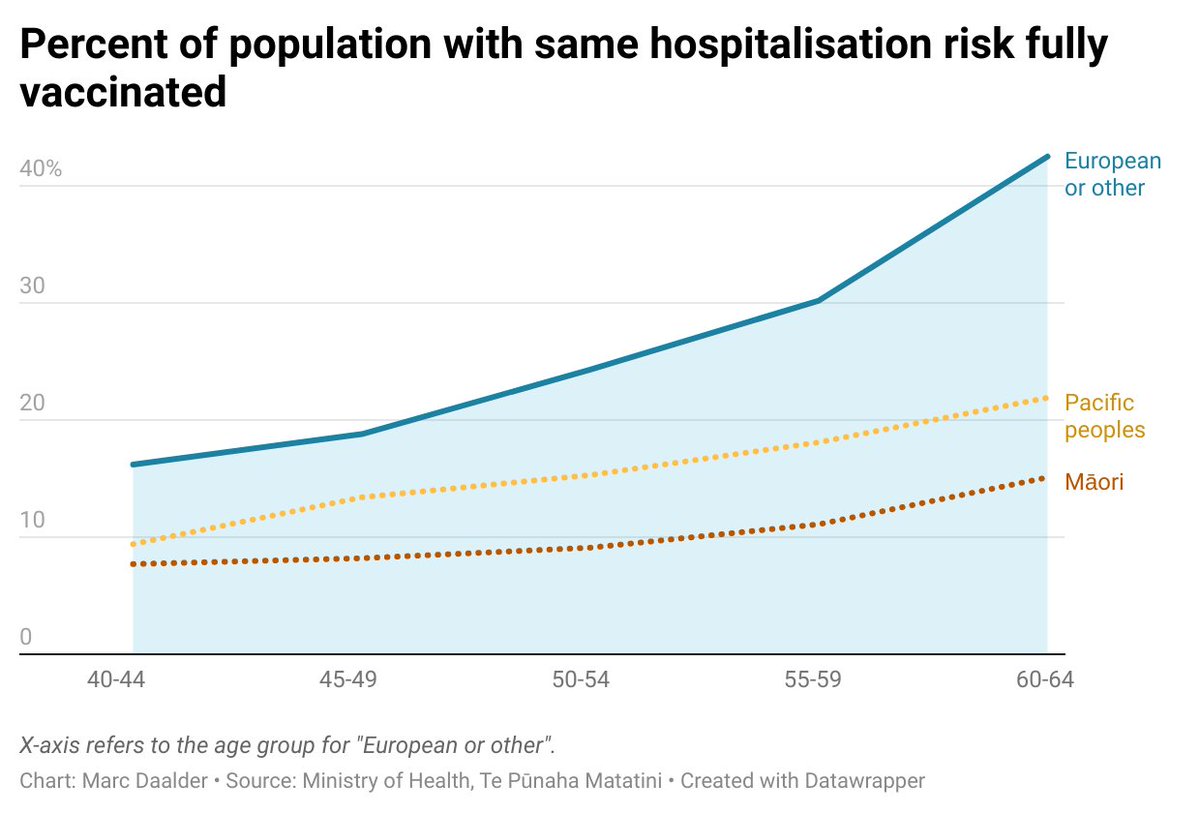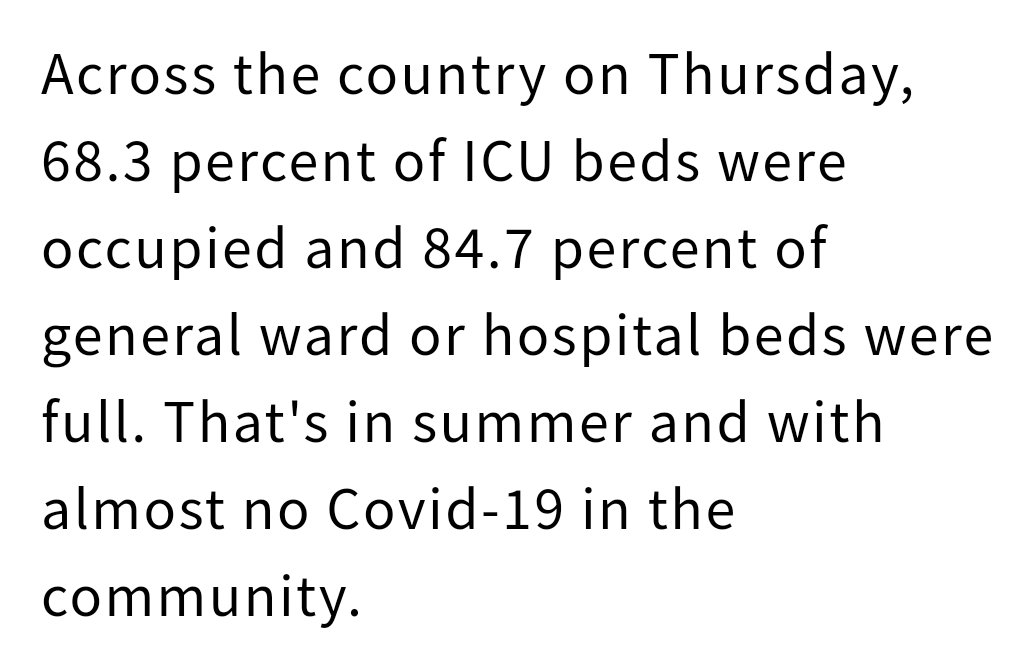This morning, I examine at the widening gap between Māori vaccination rates and those of the general population, why the Government's excuse for this gap doesn't hold up and how the situation might even be worse than it appears:
newsroom.co.nz/the-stark-ineq… #nzpol #Covid19 #Covid19nz
newsroom.co.nz/the-stark-ineq… #nzpol #Covid19 #Covid19nz
Just 19 percent of eligible Māori have been fully vaccinated, compared to over 30 percent of those in the "European or other" category. About 25 percent of Pasifika are fully vaccinated. 

When asked about this disparity, the Govt has long pointed to different age structures in the population, saying that because younger people haven't had a chance to be vaccinated, the % of unvaxxed Māori will be higher. 60+ Māori and Pasifika were more vaccinated than others. 







But there are two reasons the Government's argument doesn't hold up. First, we've reached the point where younger age groups are eligible and Māori and Pasifika are under-represented in vaccinations in this groups. In other words, the gap is *widening*. 



Second, the age-based rollout assumes there's a level playing field. But there isn't. Recent research by @PunahaMatatini shows a Māori person has the same hospitalisation risk from Covid-19 as a white person 20 years their senior. For Pasifika, the gap is 25 years. 

And that comes *after* you account for the higher prevalence of comorbidities in the Māori and Pasifika communities. So while Māori and Pasifika might be ahead of the rest of the population in vaccinating those aged 60-64, for example, they're lagging on a risk-based view: 



If you apply the same risk lens to the entire rollout, the stark inequity of the programme comes into view. As @rg_jones told me: "The decision of the Government not to prioritise by ethnicity has led to inequity basically being designed into the vaccine rollout." 

I go through all this and more in the article itself, which I encourage you to take a closer look at for the rest of the detail and for a more complete version of my discussion with Rhys Jones: newsroom.co.nz/the-stark-ineq…
• • •
Missing some Tweet in this thread? You can try to
force a refresh










